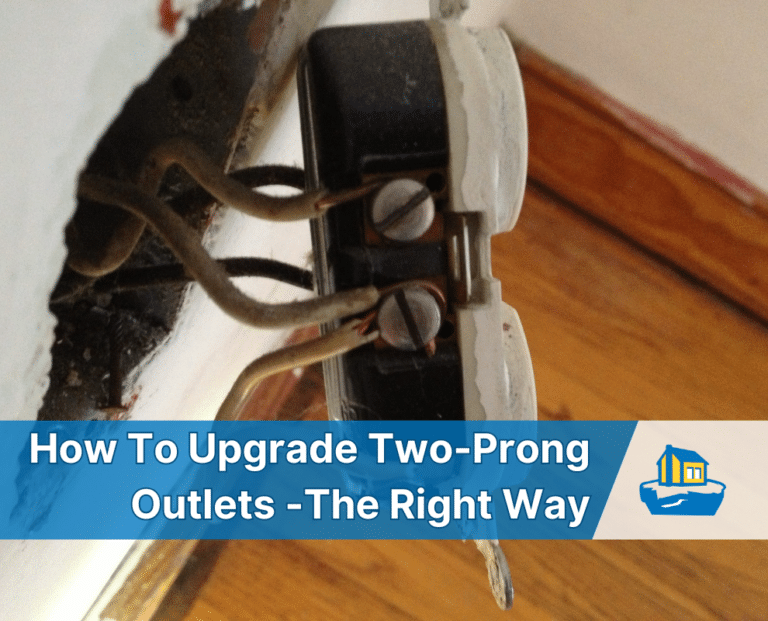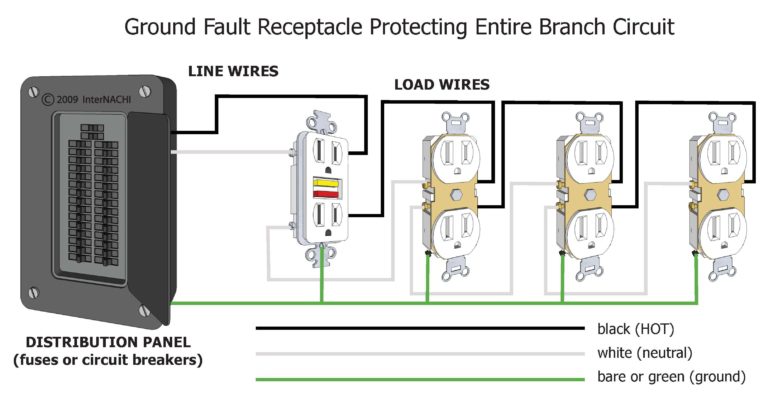4.9 1890+ Google Reviews

If your older home doesn’t have three-prong outlets, you’ll want to know how to upgrade two-prong outlets – the right way.
Before 1947, the National electrical code had no grounding receptacle requirements. Then for years only laundry appliance circuits required a grounding-type receptacle. Then, in 1956, the NEC added basements, porches, and other areas where ground contact was likely.
Next, in 1959, the NEC added the grounding requirement for kitchen sink receptacles. Finally, in 1962 the national electric code effectively required grounding on all receptacles.
The progression of grounding receptacle requirements follows a very similar progression to gfci receptacle requirements.
We have many older homes and older outlets here in Virginia. In fact, we do hundreds of inspections a year on homes older than 75.
Many of these older homes have two-wire systems – one hot wire (aka ungrounded wire, live wire, or black wire) and one neutral wire (aka grounded wire, or white wire)
In short, the hot wire carries the electricity to the electrical devices, and the neutral wire carries it back to the main electrical panel.
Accordingly, older electrical two-prong ungrounded outlets had only two prongs – one for the hot wire and one for the neutral wire. Thus, upgrading the older two-prong outlets requires consideration for the third (grounding) wire.
The ground wire bonds all-metal non-current-carrying components to the main panel.
In ground faults, this wire carries the flow of electricity back to the main panel. Accordingly, this allows the circuit breaker to trip.
Without a ground wire present, non-current carrying metal components, such as the metal frame of an appliance, will stay live until grounded. So if a homeowner touches the frame and is grounded, the electricity will flow through them, also known as an electrical shock.
You can’t upgrade two-prong receptacles with three-prong receptacles without considering how you will address the third prong.
Aside from rewiring or running separate ground, the National Electrical Code gives us more cost-effective options for replacing old two-prong outlets.
“NEC 406.4…
- (a) A non–grounding-type receptacle(s) shall be permitted to be replaced with another non–grounding-type receptacle(s).
- (b) A non–grounding-type receptacle(s) shall be permitted to be replaced with a ground-fault circuit interrupter-type of receptacle(s). These receptacles or their cover plates shall be marked “No Equipment Ground.” An equipment grounding conductor shall not be connected from the ground-fault circuit-interrupter-type receptacle to any outlet supplied from the ground-fault circuit-interrupter receptacle.
- (c) A non–grounding-type receptacle(s) shall be permitted to be replaced with a grounding-type receptacle(s) where supplied through a ground-fault circuit interrupter. Where grounding-type receptacles are supplied through the ground-fault circuit interrupter, grounding-type receptacles or their cover plates shall be marked “GFCI Protected” and “No Equipment Ground,” visible after installation. An equipment grounding conductor shall not be connected between the grounding-type receptacles.
“A” is not really what anyone wants. Notably, it allows you to replace two-prong receptacles with two prong receptacles. So, your new receptacle would be prettier than your old receptacle, with no added functionality.
B and C are very similar and amount to adding GFCI (ground fault circuit interrupter) protection to those circuits.
In other words, the NEC allows you to upgrade old two prong receptacles to three prong receptacles without adding a ground wire. Of course, you must add GFCI protection to those circuits AND label them appropriately.
The easiest way to accomplish this is to add GFCI breakers to the breaker box. Using a breaker eliminates finding the first receptacle in each circuit. However, if your box won’t accommodate those breakers, you will need to install GFCI outlets.
NOTE: A GFCI outlet protects all the outlets downstream of it. You do not need to replace each receptacle with a GFCI outlet – only the first one in the circuit.
